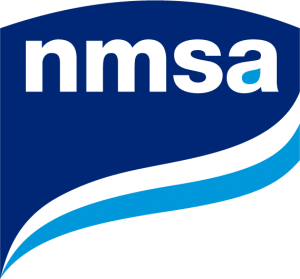Give the U.S. stormwater sector its first nationwide grade. Assessing stormwater infrastructure today will give a clearer view of the sector’s progress in the future. Stormwater and the challenges it poses impact many industries and professionals, so we are looking for input from those both within and outside of the sector.
The American Society of Civil Engineers gave the water sector a D+ in its most recent Infrastructure Report Card. This grade is alarming for those both within and outside of the water sector. Yet, the only growing source of water pollution – urban stormwater runoff – is not included in this metric.
The National Municipal Stormwater Alliance is undertaking an effort to give stormwater its first nationwide grade. This effort is meant to support and compliment the ASCE Infrastructure Report Card, increasing coverage of the water sector.
A number of countries, localities, and U.S. states have incorporated stormwater into their infrastructure report cards, including those below:
- Canada Infrastructure Report Card
- New Zealand National Water Industry Report Card and Roadmap
- Texas Stormwater Report Card
- Surface Water Quality Infrastructure Report Card (Orange County, California)
- Stormwater Report Card (Kitchner, Ontario)
How to Grade
When assigning grades below, we ask that you first assess the sector’s current capacity, condition, funding level, operation and maintenance, public safety, resilience, and innovation with a simple grade of A through F. We also ask you to give grades for the stormwater sector assuming an ideal scenario where the sector is operating under “StormSmart” conditions, where all available technologies and innovations are put into practice to their fullest potential.
Please note that the grading criteria listed below are consistent with the ASCE Infrastructure Report Card paradigm. Descriptions for each grade are also listed below. At the end, please also identify your region to determine any trends by location. If you work across regions, we ask you to identify the region that represents most of your work and/or your knowledge in terms of stormwater management.
A – EXCEPTIONAL, FIT FOR THE FUTURE
The infrastructure in the system or network is generally in excellent condition, typically new or recently rehabilitated, and meets capacity needs for the future. A few elements show signs of general deterioration that require attention. Facilities meet modern standards for functionality and are resilient to withstand most disasters and severe weather events.
B – GOOD, ADEQUATE FOR NOW
The infrastructure in the system or network is in good to excellent condition; some elements show signs of general deterioration that require attention. A few elements exhibit significant deficiencies. Safe and reliable, with minimal capacity issues and minimal risk.
C – MEDIOCRE, REQUIRES ATTENTION
The infrastructure in the system or network is in fair to good condition; it shows general signs of deterioration and requires attention. Some elements exhibit significant deficiencies in conditions and functionality, with increasing vulnerability to risk.
D – POOR, AT RISK
The infrastructure is in poor to fair condition and mostly below standard, with many elements approaching the end of their service life. A large portion of the system exhibits significant deterioration. Condition and capacity are of serious concern with strong risk of failure.
F – FAILING/CRITICAL, UNFIT FOR PURPOSE
The infrastructure in the system is in unacceptable condition with widespread advanced signs of deterioration. Many of the components of the system exhibit signs of imminent failure.
